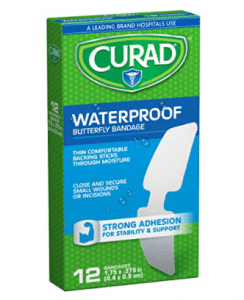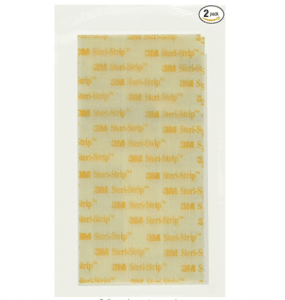Introduction
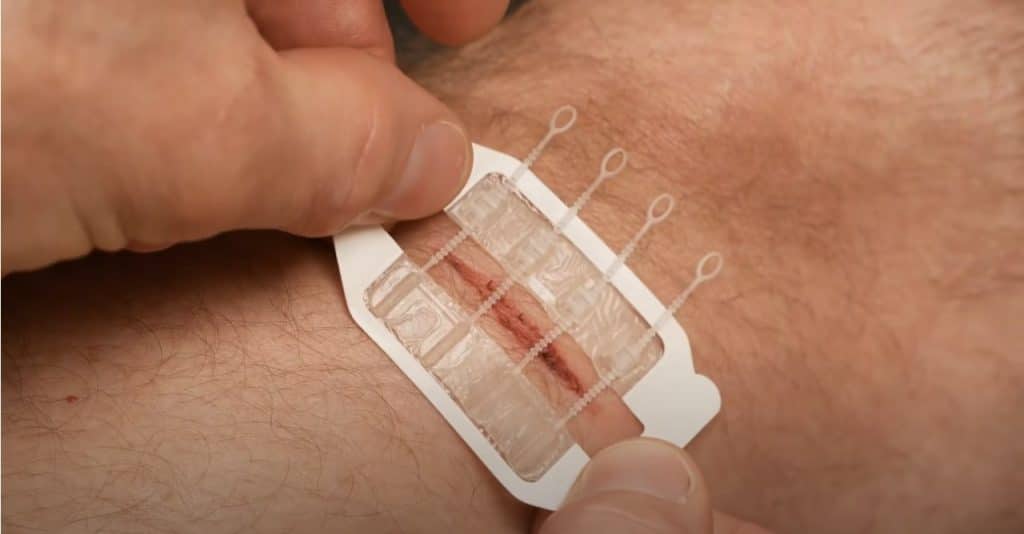
To the point
As a survivalist, you should know the basic rules of medical care and have a first aid kit with you during every trip to take care of your health. For example, a butterfly bandage is a medical tool that is helpful for the treatment of wounds. However, you should have some skills in medical aid to make this type of bandage and put it correctly in any part of the body.
The name of this bandage was given to it because of the specific shape — narrow middle part and wide adhesive sides. Butterfly bandages and sterile dressing have the same usage purpose, and you must have them in your survival bag for emergency medicine. Also we have detailed description of triangular bandage uses for survival.
Keep reading this article to learn algorithms of wound care with butterfly stitches and how to make DIY butterfly stitch. Moreover, we will provide medical advice that will be practical in some emergencies. Knowing this information, you will have more opportunities to make your survival time safer.
If you already know the difference between various adhesive bandages and are ready to buy them, here are high-quality ones:
Purpose of Using Butterfly Bandage
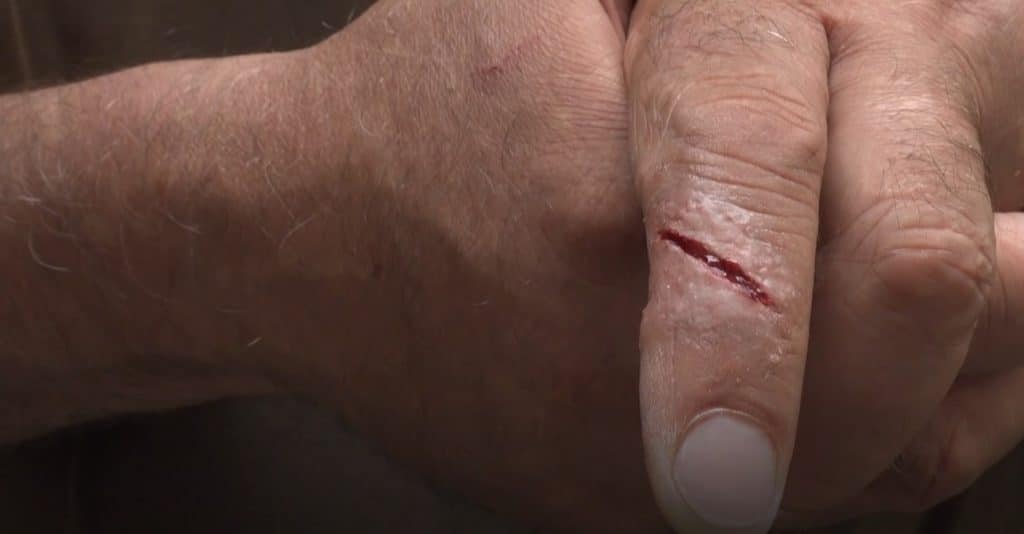
If you go camping often and there are no hospitals around the places you visit, you must know how to use a butterfly bandage for emergency medicine. Be ready for unexpected injuries getting by yourself or your friends, and carry butterfly stitches with you.
Medical Care for Injuries
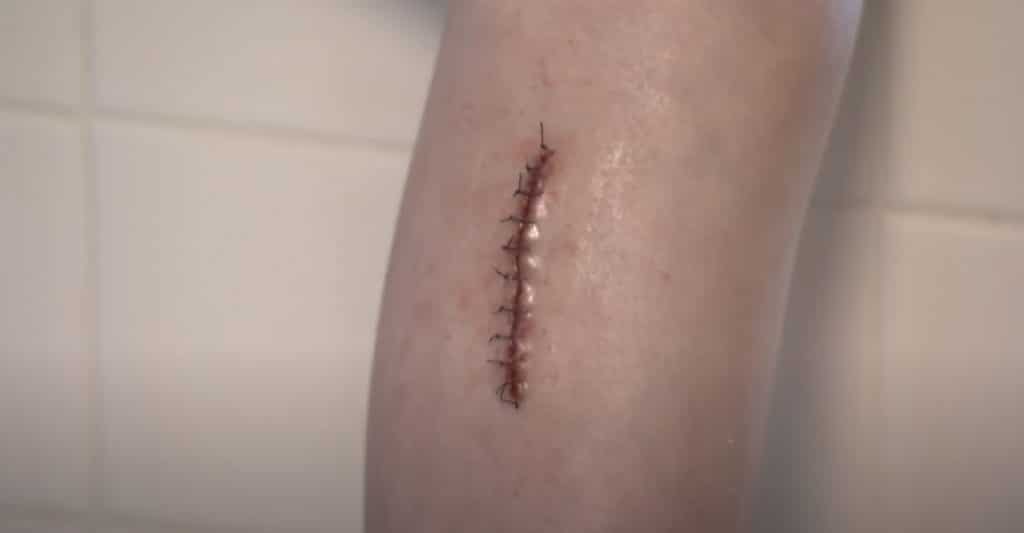
Any medical treatment of a wound aims to close the gap and allow the body to regenerate tissues. We know four main methods of closing a wound which provides effective result:
- Skin glue;
- Stitches;
- Staples;
- Adhesive bandages.
Let us describe these methods in detail to understand the situations better when you have to use them.
1. Skin Glue
You can apply skin glue if the wound gap is not deep, and it is easy to hold the sides of the wound together. Skin glue will help to connect the skin and keep it in its original position while the body will heal the wound inside. However, you should use this method only for minor injuries without much bleeding.
2. Stitches
Stitching the sides of a wound with a needle and special thread is the most common way to treat the injury. Usually, it is a safe method for incision care when a professional doctor makes clinical procedures in sterile conditions. You can do it in nature, but be sure that the needle is disinfected and you apply nylon or silk material.
3. Staples
Staples are suitable only for particular types of wounds even though they are much easier to apply than stitches. Doctors recommend using staples when a wound is deep, but the edges are straight. It is appropriate to apply staples when the skin is thick, like a scalp.
4. Adhesive Bandages
This method includes the application of butterfly stitches or other sterile strips. The idea of using adhesive and butterfly stitches as well is that they pull the sides of a wound in the center and allow it to heal.
Be careful choosing the type of medical treatment for healing the wound because not all of them are suitable for all situations.
For instance, there are conditions when adhesive bandages are useless, and you should apply larger bandages or stitches:
- A wound is located on a moving part of the body, and it creates tension (for example, elbow or knee);
- The sides of the wound are ragged;
- Tightening of a wound does not help to stop bleeding;
- A wound goes to muscles or fat and is too deep;
- You do not want scars on the skin.
There are some cases when any self-help is prohibited, and you need to go to the hospital:
- , An animal made the injury, and you are not sure that it had tetanus shot;
- There are some objects in the wound, or it is dirty inside.
5. Butterfly Bandage VS SteriStrips
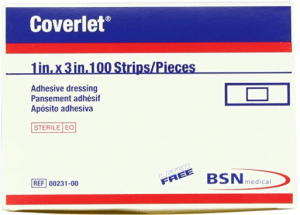
However, the application of Steri Strips is easier, and that is why they are more appropriate for long wounds. To heal longer wounds, you need to put several strips, and Steri Strips are more convenient in this situation.
6. Butterfly Bandage VS Stitches
In any case, when you can avoid stitching of skin, it is more preferable to use a butterfly bandage for emergency medicine. This is because the application of butterfly stitches is not painful, and it works only because of the sticky end. Stitches require a person to endure pain during the process of the connection of wound edges and their removal after several days.
On the other hand, butterfly stitches can grab only the upper layer of skin even if you apply more than one bandage, and it is not enough for some deep wounds. That is why you should use stitches when the wound is profound.
Besides, if you worry about some marks on your skin, stitches are the best option for you as they leave scars with a lower probability than adhesive bandages. It means that it is more preferable to go to a hospital in the case when you injured your face or other visible parts of the body.
7. Limited Time for Stitches
Make sure that you contact a doctor in less than 12 hours after the injury because there are limits for suturing the wound. Some doctors can stitch the wound after not more than 24 hours, but some of them do not do it even after half of the day after damage.
Do not waste time and visit a doctor right after injury if you are sure that only stitches can help you to heal the wound!
There is a simple reason for these limitations — a spread of bacteria. The more time passed after injury; the higher is the probability that some infections entered your body. When doctors close the wound, bacterias start to infect muscles, bones, and other parts of the organism. That is why it is risky to suture a wound after even several hours of being in an unsterile environment.
There is another scenario when you can still stitch your wound even if more than 24 hours passed. However, a doctor will need to remove the internal sides of the wound or put a drain on it. These procedures are hurtful, and it is better to prevent them. The main conclusion is that you need to go to the hospital as soon as possible if you are not sure that a bandage can help you. By the way, disinfection of the wound is another crucial factor you need to think about right after an injury.
So, butterfly bandages are appropriate to use only when a wound is short and small. Otherwise, you can apply it as emergency medicine to keep your wound clean and visit the nearest hospital to get professional medical care.
Algorithm for Applying Butterfly Bandage
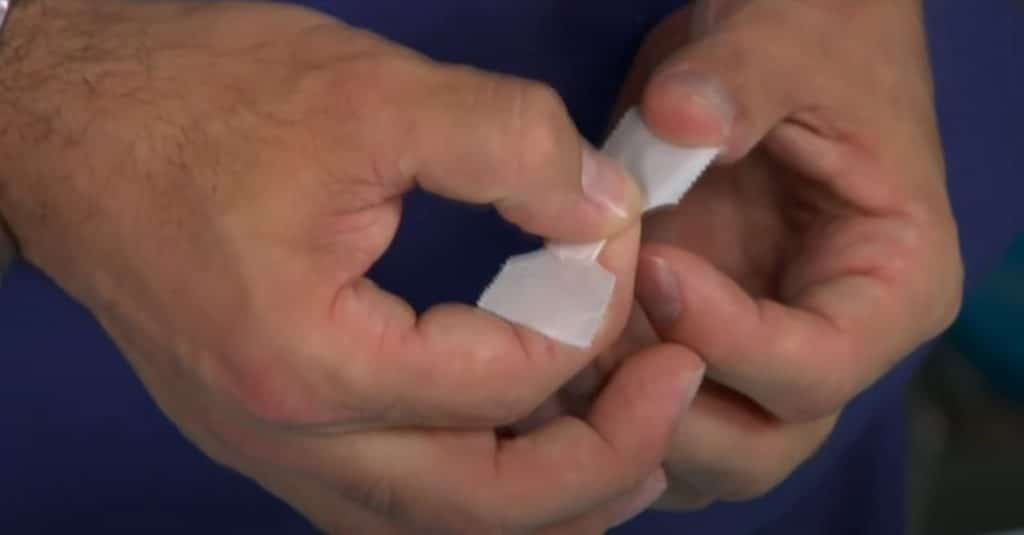
This step-by-step guide can be practical for emergency medicine, so keep reading.
1 — Stop Bleeding
To determine the deepness and state of the wound, you should stop the flow of blood and clean the wound. In any case, stop of the bleeding is the first thing you must do after an injury. Make sure that you use sterile and suitable materials for this. Apply gauze from your first aid kit or a clean cloth and put pressure on the wound. Keep it as long as blood is coming until it stops. Avoid using any paper materials as they can leave small parts inside the wound, and it can lead to infections.
2 — Disinfect the Wound
You should always have clean and cool water in your survival bag for emergency medicine. Pour clear water into the wound and try to clean it from dirt and external objects. My best recommendation is to keep these bottles with saline solution in your bag as you can use them for the disinfection of wounds and eyes.
3 — Put Butterfly Bandage
Application of butterfly bandage is as easy as putting any adhesive bandage. Firstly, you should remove the back paper part from half of the patch and put the sticky end tightly on one side of the wound. After this, you should pull the bandage and connect the sides of the wound under the patch. When the bandage is stretched enough, you should put the other sticky end of the patch to the skin.
Remember that stretching of bandage allows keeping the wound closed with its sides. Moreover, you should locate a bandage at some distance from the wound during the first step to save place for stretching and locate non-sticky parts above the cut.
4 — Fix the Result with Additional Butterfly Stitches
It is a common practice to put more than one bandage on the wound. For instance, if the wound is short, you can apply one more butterfly bandage on the top of the first one in a crosswise way to pull the edges of the cut stronger. However, if the wound is long, it is better to apply more butterfly stitches near to the first one with stretching to another direction. In addition, it is important to start putting a sticky end tightly from another side when you apply the other sticky end to save equality of tension to the skin from both sides.
5 — Use Healing Ointments
You have to apply gels with antibiotics to the wound to prevent infections and make the healing process faster. You should do it regularly as well as change butterfly stitches when even one side falls off.
6 — Keep Wound Dry
You have to take care of the wound and control its state for several days after injury. One of the most crucial rules is that you should avoid getting the badge wet. For this, you can pull gauze and a band-aid over the cut, which will help to keep the wound dry.
Besides, the attachment of gauze and patch helps to fix the position of butterfly bandages. If you noticed one side of the bandage gets wet, you should remove it and apply a new one.
7 — Use Vitamin E
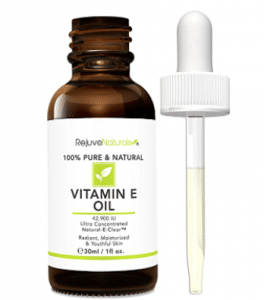
8 — Remove Bandage
You should keep the bandage on the skin for at least a week. It is recommended to save a bandage on the wound as long as it is sticky enough, but sometimes you will need to replace it earlier. For example, when the sides of the butterfly bandage are wet, it falls off, and you will have to apply a new one.
You can remove butterfly stitches 12 days after application or when you are sure that the cut is healed. Water and peroxide can help you to make this process easier. Soak sides of butterfly bandage with the mix of these liquids and gently lift it from your skin.
Remember that application of butterfly stitches is not a 100% method for healing open wounds. You should pay attention to its state and your health in general even after the application of the bandage. Some conditions require you to see a doctor:
- Bleeding continues after application of bandage;
- The wound is swollen and red because of probable infection;
- You have pain in the underarm or groin because of infection.
DIY Butterfly Bandage
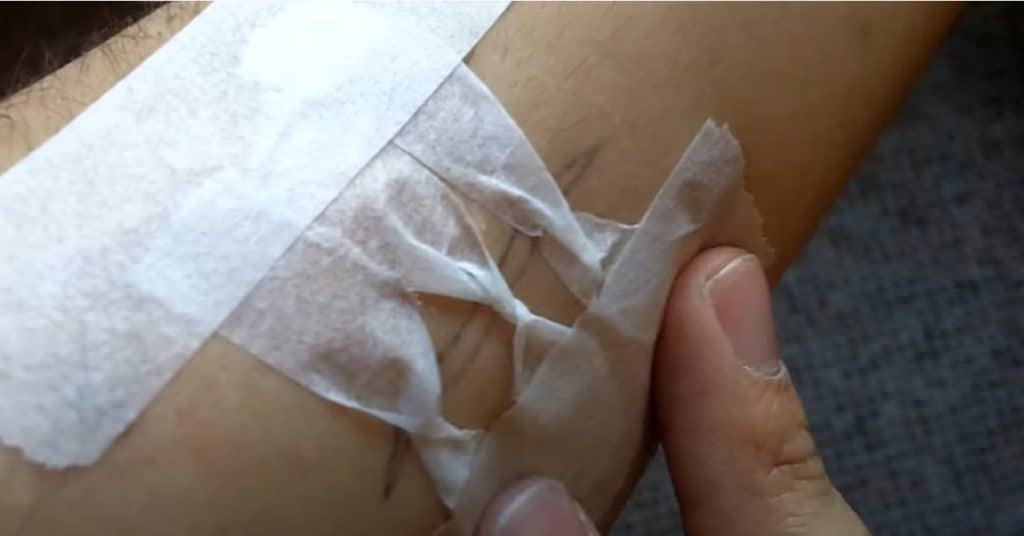
Anyways, when you forgot to put it into your survival bag, or you did not have enough space for it, you should know how to create it by hand from other materials. Use one of the methods described below to get a DIY butterfly bandage.
1 — Cut and Fold
The advantage of this method is that the part of the tape that touches the wound is non-sticky. On the other hand, it takes some time to create a butterfly bandage with this method, and you will need scissors for this. By the way, in addition to the medical aid kit, it is preferable to have a multitool set with scissors and other elements of gear for survival trips.
Step-by-step instruction:
- Cut a tape to get a line with 1 and 3 inches long sides;
- Fold this line in half lengthwise with a sticky surface on top;
- Make triangle cuts from both sides of folded tape;
- Fold notched pieces in the center of the tape in such a way that there is no sticky surface in the middle of the bandage;
- Use the resulting tape as a bandage;
- Make sure that the sticky part does not touch the place of injury.
2 — Twisting Tape
This approach is easier to follow because you do not need extra tools except the tape itself. The idea is to make adhesive tape with a narrow part in the middle. For this, you can just twist the tape.
Firstly, apply one sticky end tightly to the skin close to injury. Then you need to pull the tape as a bridge across the wound and twist it in the middle several times. Continue with an application of the rest of the adhesive tape on another side of the wound.
It is important to note that not all types of tapes are suitable for this method. For example, duct tape is too thick, and it isn’t straightforward to make its middle non-sticky. Medical tape is easier to use for this purpose, but still, you will need the help of another person during the application.
Summary

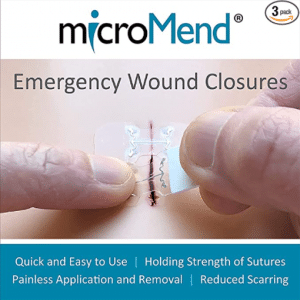
By the way, if you want to upgrade your preparedness and modernize your medical kit, you can buy Zip Stitch, CloseX, or Micro Mend.
These devices can stitch wound edges without invasion and are helpful in emergency medicine.
Anyways, try to take care of your health and do not put your state at risk. If you got injured, estimate the situation and make a health decision about going to the hospital.
Frequently Asked Questions
What are butterfly bandages for?
Butterfly bandages are used for emergency medicine in case of injuries. It is a fast and convenient way to tighten wound edges and do not allow infection to come inside. Sometimes you need to apply more than one bandage if the bound is long. However, it is practical for healing short and not deep wounds only. Keep it in your medical kit to be prepared for unexpected damages.
How long do you leave a butterfly bandage on a cut?
Applying butterfly stitches, you should leave it on a cut as long as possible until it falls off the wound. Usually, healing takes from 10 to 14 days if the cut is not deep. If the sticky end of the butterfly stitch comes off, you should apply a new one.
How to use a butterfly bandage on a finger?
The process of butterfly bandage application on a finger is the same as for other parts of the body. You should put the sticky end of this adhesive tape to one side of the wound, then apply pressure and pull it in the direction of another side. Apply the other sticky end to the skin and make sure that it is fixed on a finger.

